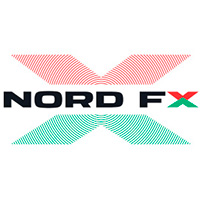Let’s look at Solana’s features and competitive advantages, explore Solana as a technology, and speculate as to whether Solana has the right stuff to become the next crypto sensation. Just a few weeks ago, Solana hit a two-year low of $8.17 (USD), dropping out of the top twenty coins, but Solana seems to be making a comeback, and crypto traders everywhere are watching with high hopes.
The crypto news sites are buzzing about Solana after the price more than doubled this month, rising over 58% to $23.70. Very bullish signs after dropping more than 80% in 2022.
What are the advantages of Solana technology?
Bitcoin is the grandpa of all crypto, but the next-gen coins are far superior in technology, and Solana is high on the list of contenders for becoming number one. There are many advantages to Solana technology. One advantage is that it is scalable, meaning it can handle a large number of transactions per second (TPS). Another advantage is that it is energy-efficient, using less energy than other blockchain technologies. Finally, it’s very fast. Transactions on the Solana network can be confirmed in just a few seconds.

Bitcoin and Solana share a lot of similarities. Both are decentralized, open-source platforms that allow users to send and receive digital currency, without the need for a central authority. Given that Solana is basically a Bitcoin 2.0, it’s far more reasonable to expect banks and other financial institutions to choose Solana, and if the world ends up favoring SOL, there’s no telling how high the coin price could go.
Conclusion
Solana is designed to be much faster and more scalable than Bitcoin. While Bitcoin can process around seven transactions per second, Solana is designed to handle up to 65,000 transactions per second. This makes it a much better option for applications that require fast or real-time payments, such as gaming or social media platforms.
Another difference is that Solana uses a proof-of-stake consensus algorithm instead of Bitcoin's proof-of-work algorithm. Several altcoins released that followed Bitcoin use proof-of-stake, and are relatively stable and environmentally friendly.
One criticism, however, is that proof-of-stake may allow people to hold power over the core value. The more proof-of-stake a trader owns, the greater control they have over the system. For example, known as a 51% attack, a group of miners who control more than 50% of the blockchain can cause vulnerabilities. Minors with majority control over the network can interrupt the registering of new blocks. While this is not a huge issue at the moment, it’s still a weakness that hackers can exploit in the future.
So, while Solana looks strong for 2023, it’s not a foregone conclusion… yet. When considering trading Solana and other cryptocurrencies, always remember that the crypto space is perhaps the most volatile market of all time, and spikes or crashes can occur without any fundamental or technical warnings. Put Solana at the top of your 2023 crypto watch list and be ready for the next market move.
 Trump has declared that the United States could become the global capital of the crypto industry. To achieve this, he proposes reducing regulatory pressures.
Trump has declared that the United States could become the global capital of the crypto industry. To achieve this, he proposes reducing regulatory pressures. Forex trading is a captivating endeavor, promising both active and passive income streams. Yet, mastering forex is a continuous journey that transcends expertise levels, be it a novice or a seasoned trader...
Forex trading is a captivating endeavor, promising both active and passive income streams. Yet, mastering forex is a continuous journey that transcends expertise levels, be it a novice or a seasoned trader... In a resounding victory, NordFX, a prominent brokerage firm, has been crowned the "Best News & Analysis Provider" of 2023...
In a resounding victory, NordFX, a prominent brokerage firm, has been crowned the "Best News & Analysis Provider" of 2023... Errante, the premier online broker, is dedicated to delivering top-tier services and forging long-lasting, trust-based relationships with our clients. Our mission is to enhance your online trading journey...
Errante, the premier online broker, is dedicated to delivering top-tier services and forging long-lasting, trust-based relationships with our clients. Our mission is to enhance your online trading journey... Gold, a precious metal revered for its value for centuries, has found its place in the world of trading. Trading gold has become a popular way to invest in the commodity market...
Gold, a precious metal revered for its value for centuries, has found its place in the world of trading. Trading gold has become a popular way to invest in the commodity market...